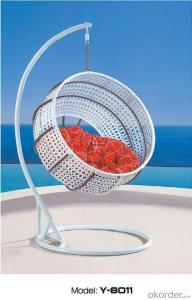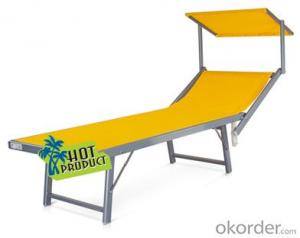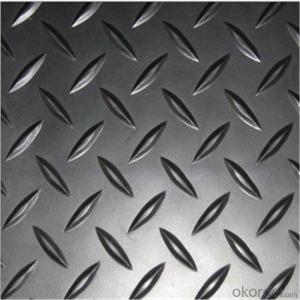Aluminum Diamond Plate Bed Rails
Aluminum Diamond Plate Bed Rails Related Searches
Led Light Bulbs For Ceiling Fixtures Led Lamps For Ceiling 42 In Ceiling Fan With Light Aluminum Coil Stock For Gutters Aluminum Foil For The Grill Hole Saw For Aluminum Plate Aluminum Tread Plate For Trailer Bow Plate For Aluminum Boat Aluminum Foil For Grow Room Aluminum Foil For Joint PainHot Searches
Stock Price For Aluminum Aluminum Coil Stock For Sale Aluminum Gutter Coil For Sale Used Aluminum Scaffolding For Sale 1/4 Aluminum Plate For Sale Aluminum Bar Stock For Sale Aluminum Round Stock For Sale Aluminum Diamond Plate For Sale Aluminum Scaffolding For Sale Craigslist 6061 Aluminum Plate For Sale Aluminum Dock Plate For Sale 7075 Aluminum Plate For Sale Aluminum Tread Plate For Sale Aluminum Checker Plate For Sale Aluminum Plate For Sale Near Me Plate Aluminum For Sale Aluminum Plate For Sale Aluminum Square Stock For Sale Aluminum Flat Stock For Sale Billet Aluminum Stock For SaleAluminum Diamond Plate Bed Rails Supplier & Manufacturer from China
Okorder.com is a professional Aluminum Diamond Plate Bed Rails supplier & manufacturer, offers integrated one-stop services including real-time quoting and online cargo tracking. We are funded by CNBM Group, a Fortune 500 enterprise and the largest Aluminum Diamond Plate Bed Rails firm in China.Hot Products
FAQ
- Yes, aluminum sheets can be used for structural purposes. Aluminum is a lightweight and highly malleable material that can be easily fabricated into various shapes and sizes. It has excellent strength-to-weight ratio, making it suitable for structural applications where weight reduction is a priority. Aluminum sheets are commonly used in industries such as aerospace, automotive, and construction for making structural components like panels, beams, and frames. Additionally, aluminum has good corrosion resistance, which further enhances its suitability for structural purposes, especially in outdoor or marine environments. Overall, aluminum sheets offer a reliable and cost-effective solution for structural applications.
- How does the reflective film stick to the aluminum plate?
- Put the plate clean, dry, reflective film a head from the aluminum back 2CM at the beginning attached to the aluminum plate, wrapping, pull to the front, back and side brush paper hanging tear reflective film side with the hanging brush to the aluminum paste, try to avoid bubbles.
- The fatigue limit of aluminum sheets is defined as the highest stress level that the material can withstand indefinitely under cyclic loading conditions without experiencing fatigue failure. When compared to other materials, aluminum exhibits a relatively elevated fatigue limit, allowing it to endure a considerable number of load cycles before fatigue failure sets in. Nevertheless, it is crucial to acknowledge that the fatigue limit of aluminum sheets is subject to variation depending on factors such as alloy composition, heat treatment, and surface conditions. Therefore, it becomes essential to take these factors into account and perform appropriate testing in order to ascertain the precise fatigue limit of a specific aluminum sheet.
- To prevent warping of aluminum sheets during machining, there are several steps that can be taken: 1. Proper material selection: Choosing the right grade of aluminum is crucial to minimize warping. Aluminum alloys with lower levels of thermal expansion, such as 6061 or 7075, are less prone to warping during machining. 2. Stabilize the material: Before machining, it is recommended to anneal or stress-relieve the aluminum sheets. This process helps to reduce internal stresses within the material and minimize the chances of warping. 3. Use appropriate cutting tools: The selection of cutting tools is critical to prevent warping. Tools with sharp edges and proper geometry should be used to minimize heat generation and ensure efficient chip removal. Carbide or diamond-coated tools are often preferred for machining aluminum as they have high heat resistance. 4. Minimize heat generation: Excessive heat can cause the aluminum sheet to warp. To prevent this, coolant or lubricants should be used during machining to reduce friction and dissipate heat. Continuous cooling can help maintain a stable temperature and prevent warping. 5. Control cutting parameters: Proper control of cutting parameters such as cutting speed, feed rate, and depth of cut is essential to prevent warping. High cutting speeds or excessive material removal rates can generate excessive heat, leading to warping. Optimal parameters should be determined through experimentation and experience. 6. Use appropriate fixturing: During machining, proper fixturing is crucial to minimize the chances of warping. Securely clamping the aluminum sheets using appropriate fixtures or jigs helps to maintain stability and prevent movement during machining. 7. Consider machining techniques: Certain machining techniques, such as climb milling or ramping, can help reduce the chances of warping. These techniques minimize vibrations and ensure a smoother cutting process, reducing the risk of warping. 8. Post-machining treatment: After machining, it is recommended to stress-relieve the aluminum sheets again. This step can help further reduce any residual stress that may have developed during the machining process. By following these steps, it is possible to significantly reduce the chances of warping during the machining of aluminum sheets, ensuring high-quality finished products.
- what were the cinergy field (riverfront stadium, cincinnati, oh) seats made of? were they metal or aluminum? i know they were silver under the red paint...
- The stadium opened in 1970, so that would be aluminum.
- The surface cleanliness of aluminum sheet has a significant impact on its adhesion properties. The presence of contaminants, such as dirt, grease, or oxide layers, on the surface can hinder the ability of adhesives to bond effectively with the aluminum sheet. A clean and properly prepared surface is essential for achieving strong adhesive bonds. When the aluminum sheet is free from contaminants, the adhesive can spread evenly and make intimate contact with the surface, resulting in a stronger bond. On the other hand, if the surface is not clean, the adhesive may not be able to adhere properly, leading to weak or unreliable bonds. In addition to contaminants, the presence of oxide layers on the aluminum surface can also affect adhesion properties. Aluminum naturally forms an oxide layer when exposed to air, which can hinder adhesive bonding. This oxide layer needs to be removed or modified to ensure good adhesion. Surface preparation methods like cleaning, degreasing, and treating with chemical solutions can help remove or modify the oxide layer, allowing for better adhesion. Various surface cleaning techniques can be employed to improve the cleanliness and adhesion properties of aluminum sheets. These can include mechanical cleaning methods such as abrasive cleaning or sanding, solvent cleaning, acid etching, or even plasma cleaning. Each method is selected based on the type and extent of contamination present on the surface. In summary, the surface cleanliness of aluminum sheet directly affects its adhesion properties. A clean and properly prepared surface ensures better adhesion by allowing the adhesive to make intimate contact with the aluminum sheet. Therefore, it is crucial to consider and address surface cleanliness when attempting to achieve strong and reliable adhesive bonds with aluminum sheets.
- Yes, aluminum sheets are suitable for pharmaceutical applications. Aluminum is a widely used material in the pharmaceutical industry due to its various beneficial properties. Firstly, aluminum sheets are lightweight and have excellent corrosion resistance. This makes them ideal for packaging pharmaceutical products as they can protect the contents from external factors such as moisture, light, and oxygen, which could potentially degrade the quality of the medication. Additionally, aluminum sheets can be easily formed into different shapes and sizes, allowing for customization in packaging design. They are also available in various thicknesses, providing options for different types of pharmaceutical products, from tablets and capsules to liquid medications. Furthermore, aluminum sheets have a high barrier property, effectively preventing the transfer of odors, flavors, and contaminants. This ensures the integrity and safety of the medication throughout its shelf life. Moreover, aluminum is a non-toxic material, which means it does not react with drugs or alter their composition. This makes it a suitable choice for pharmaceutical applications, where maintaining the purity and stability of the medication is crucial. In conclusion, aluminum sheets are highly suitable for pharmaceutical applications due to their lightweight, corrosion resistance, barrier properties, and non-toxic nature. They provide efficient protection and preservation of pharmaceutical products, ensuring their quality and safety.
- I saw a nice looking set of cast aluminum pots for a very good price. They feel very heavy. But I remember hearing that aluminum is not healthy so I am wary of buying them. Any advice would be appreciated.
- The cast aluminium pot are used in families, hotels and for any needs. They are very safe to cook.














































